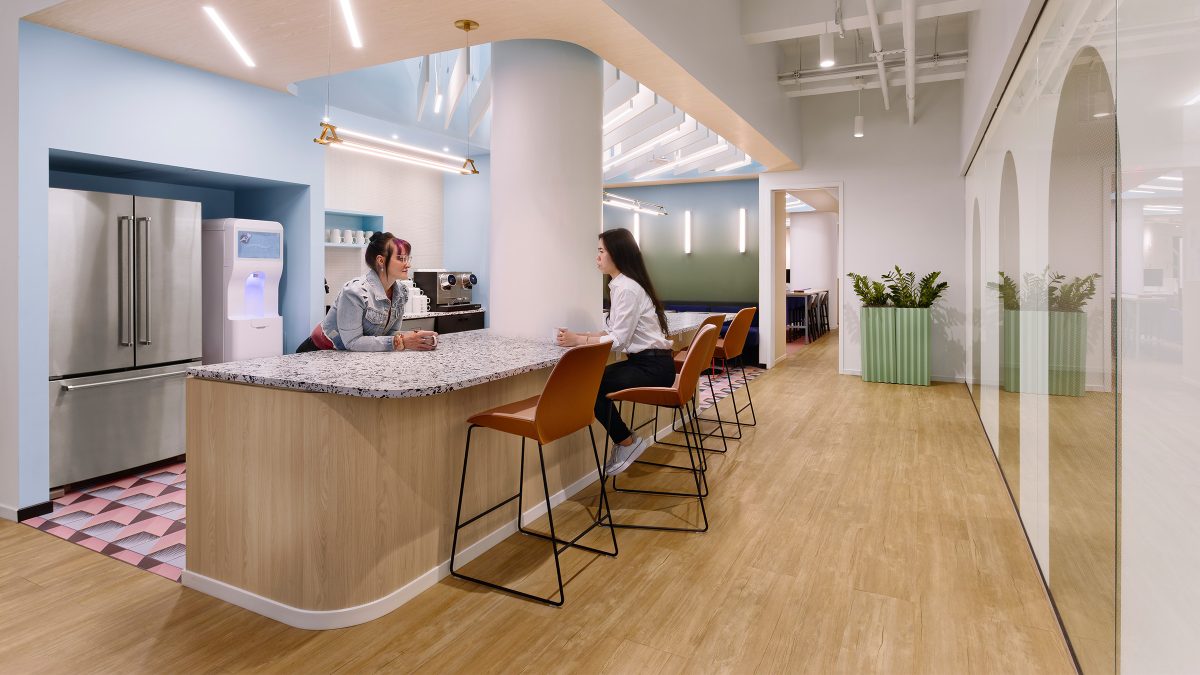










In this article, we delve into the key terms and concepts essential for understanding and supporting workplace neurodiversity in London. With a rise in neurodiverse employees in the job market, it’s becoming crucial for companies to grasp its importance.
Understanding more about workplace neurodiversity can help businesses create more welcoming spaces that support diverse needs. With our workplace strategy services in London, we can help you create a space that focuses on including everyone while addressing workplace accessibility challenges.


Neurodiversity acknowledges the natural variations in human neurological functioning as normal genetic diversity. Sometimes differences can be challenging, but usually, it’s the environment causing problems, not the differences themselves.
This perspective has piqued the interest of workplace strategists and designers, aiming to foster more inclusive spaces. Presently, neurodiversity is closely tied to personal identity. Many people proudly associate themselves with the term, viewing their distinct neurological composition as a fundamental aspect of their identity.
Key concepts

Companies like EY, IBM, JPMorgan Chase, Microsoft, and SAP have established specific programs to recruit and assist neurodivergent employees. These initiatives aim to leverage the unique abilities that neurodivergent individuals contribute to the workplace.
For example, EY’s Neuro-Diverse Centers of Excellence are dedicated to hiring neurodivergent individuals for analytical and technical positions, offering customised training, guidance and resources. Similarly, IBM’s Neurodiversity @IBM provides individualised support, ensuring employees receive the necessary neurodiversity accommodations. This program also encourages awareness and comprehension among all staff to cultivate an inclusive workplace.

Neurodivergence includes a range of neurological conditions that impact cognitive function and behaviour. Some examples include:
Autism Spectrum Disorder (ASD): Affects social engagement, communication and behavioural patterns. It’s estimated that 1 in 100 individuals in the UK have ASD.
Attention-Deficit/Hyperactivity Disorder (ADHD): Impacts focus, hyperactivity and impulse control. Approximately 2.5% of UK adults are believed to have ADHD.
Dyslexia: Interferes with reading and language-based cognitive skills. It’s estimated that nearly 10% of the UK population have some degree of dyslexia.
Dyspraxia (Developmental Coordination Disorder): Affects motor coordination and planning skills. Dyspraxia is present in about 5-6% of UK children.
Sensory Processing Disorder (SPD): Struggles with processing sensory data. SPD is found in 5-16.5% of the UK population, most commonly among those with ASD or ADHD.

Conventional work environments usually accommodate the needs of neurotypical individuals, inadvertently forming barriers for those who are neurodivergent. For example, while open-plan environments can enable teamwork, they can also present substantial difficulties for people with autism due to insufficient privacy, overwhelming sensory input and unpredictable social interactions.
Neurodivergent individuals may also face the following obstacles:
A truly inclusive design promotes flexibility and allows people to customise their experience to their needs. Furthermore, this method enables people to operate at their peak, promoting improved group interaction and efficiency.

By aligning workplace strategy with inclusive design services, we can address physical and environmental barriers to support all employees. Improving workplace accessibility ensures that every individual, regardless of their neurological makeup, can thrive in their professional environment. Discover how to support workplace neurodiversity and employ this method to enhance your team’s wellness.
If you’d like to learn more about workplace strategy services in London, please contact the team.

Associate, Workplace Strategy